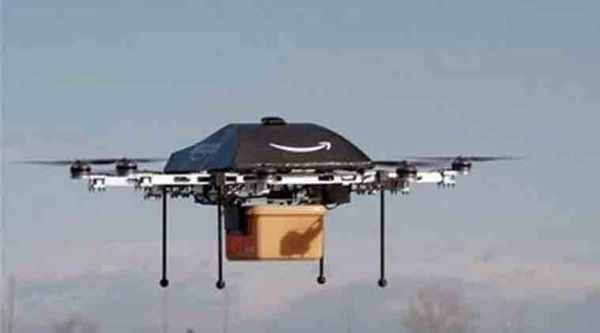- India
- International
Regulator set to clear norms for commercial use of drones
In October last year, India had banned private organisations and individuals from launching UAVs.
By: Sharmistha Mukherjee
 Drones also hold potential risks. Besides debates about their use for intrusive surveillance, battery failure or loss of navigational control could cause accidents.
Drones also hold potential risks. Besides debates about their use for intrusive surveillance, battery failure or loss of navigational control could cause accidents.
India is set to enter an exclusive club of just five countries worldwide with the Directorate General of Civil Aviation (DGCA) working on notifying regulations for commercial use of drones soon.
“Globally, Spain, Australia and New Zealand have notified provisional norms for civilian use of unmanned aerial vehicles (UAVs). The (US) Federal Aviation Administration (FAA) unveiled proposed regulations (for commercial use of small drones) last month. We are studying these and will come out with a framework in the next one or two months,” said a senior DGCA official.
“The benefits of deploying drones for civilian applications are many. They can be used for surveillance in crowded places. It would help in checking untoward incidents of unrest. We do not want to ban them but are looking at ways to define flight paths, height and areas of operation so that UAVs do not pose a hazard in manned air traffic operations,” said the official.
In October last year, India had banned private organisations and individuals from launching UAVs.

Apart from DGCA approval, the move will require clearance from the air navigation service provider, the ministries of defence and home affairs and other concerned agencies. Once the DGCA’s norms are in place, UAVs could open up a host of applications for civilians.
“The useful aspects of civilian drones are well known — agriculture, wildlife conservation, search and rescue, aerial photography, perimeter security, remote monitoring of utilities such as transmission towers, pipelines, highways, railways, etc, tracking of natural disasters and, lately, doorstep delivery of products,” said Amber Dubey, partner and India head (aerospace and defence), KPMG.
However, drones also hold potential risks. Besides debates about their use for intrusive surveillance, battery failure or loss of navigational control could cause accidents. “Given its multifarious applications and damage potential, ownership and operation of drones need to be licensed. Its size, capabilities, aerial route and end-use of collected data need to be monitored,” said Dubey.
The FAA’s proposed rules permit certified operators to fly UAVs weighing up to 55 pounds during the day. Commercial drones will be permitted to fly at a speed of up to 100 miles per hour and at heights of up to 500 feet. Operators will have to renew their permit every two years. But in a hitch for e-tailers like Amazon planning delivery services, operators are required to keep the drones in their line of sight.
In July last year, Spain approved a provisional regulatory framework to enable the civilian use of drones depending on their weight. The norms allow use of UAVs weighing up to 150 kg for investigation and development activities, agriculture-related treatments that require spreading substances over the surface or atmosphere, including products for extinguishing fires, aerial surveys, aerial observation and surveillance, including filming and forest fire surveillance activities, aerial advertising, radio and TV emissions, emergency operations, search and rescue, and other special functions.
May 07: Latest News
- 01
- 02
- 03
- 04
- 05







































